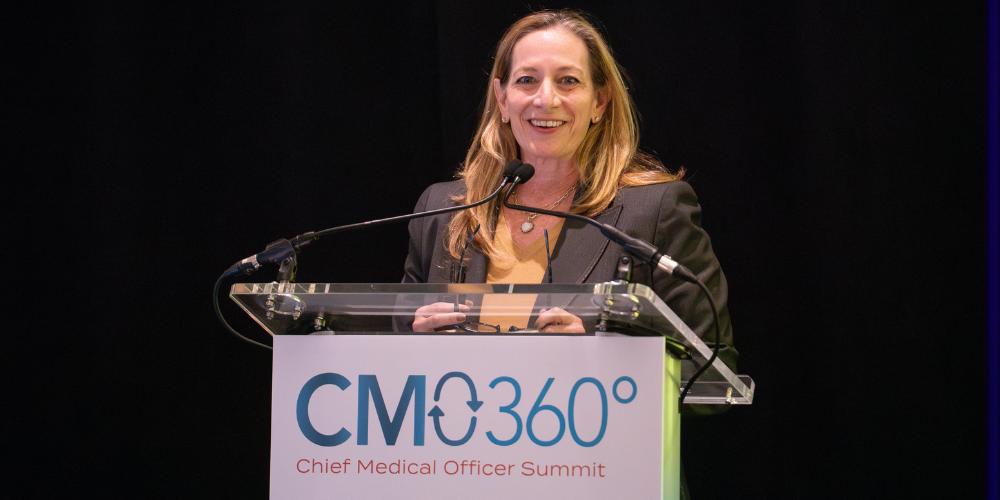
What was it about Allogene’s mission or technology that drew you to taking this role initially?
It's because of the transformative nature of CAR T. I ran the CAR T programs at Pfizer, before Pfizer made the decision to outlicense that technology. When I first started working on CAR T, I had to build up the team and build up the pipeline. I felt very connected to that, so when Pfizer decided to outlicense it, I wanted to go with it, rather than stay to lead the rest of the portfolio. I wanted to be one of the people helping to validate that technology.
In the early days, what big challenges dominated your work?
The two main challenges when you switch from autologous to allogeneic were A) you don't know if you will get graft versus host disease, and B) You don't know if your cells will get rejected. We fully acknowledged that it was very experimental. When we decided that Pfizer would go into this area, we said, “Here are the things that could go wrong. We have strategies around them. We think the science is sound.” But you never know anything until you go into patients and see.
What is your vision for allogeneic CAR T cell therapy?
We envisage the future where everybody who qualifies for CAR T therapy gets it. The vision is that you're not going to the one speciality center in your state; you're going to the hospital that's down the road. It's very hard with an autologous cell therapy, to treat all the people who need therapy. Firstly, because you need very specialized centers to do that whole complex process. And because of the timings involved, the complexities of shipping products back and forth, while you're waiting for your cell therapy, you get sicker. A lot of patients don't manage to have a cell therapy product made because of the health of their cells. And if you can't make it, there's no treatment for that patient.
What is the scope of your responsibility as CSO of Allogene?
I lead the preclinical pipeline. A lot of my day-to-day is figuring out how to balance resources across programs, so that we do everything we need to do to support the programs that are in the clinic, or going into the clinic very soon, and building that deep pipeline that will lead to long-term success of the company. I work heavily with the translational group so that when we get data back from the clinic, we look at that data and ask, “How does that measure up to what we saw preclinically?” and “Can the learnings from that help us design a next-generation product?” etc.
"For most of the patients who showed an initial response a year ago, if they got past about six months, they have a high probability of staying in response"
Allogene just released exciting data from its ongoing programs. What was the key takeaway?
I’ll start with the data from the late-term CD19 and BCMA programs. What we showed was durability of response. Other allogeneic CAR Ts have shown that they can get initial response rates, but maybe the window engraftment is short or the responses are less durable. We showed that for most of the patients who showed an initial response a year ago, if they got past about six months, they have a high probability of staying in response.
What are some of the other learnings and their implications?
We tried less lymphodepletion upfront and then a second cell dose with more lymphodepletion. We tried hitting harder up front. We tried different doses of cells and lymphodepletion. Through that, we built a good understanding of a dose response relationship between how much ALLO-647 we give, how much lymphodepletion we get and how that affects the persistence of our CAR T and response. Now we’ve got that whole package.
It may need to be tweaked for each new program, but we've built a large body of data to let us see what works. And what works is enough lymphodepletion to get good solid engraftment and some persistence. We think that's differentiating for us.
You also shared data on your first solid tumor program. What did you learn about CAR T in solid tumors?
We have shown that in a solid tumor with an allogeneic CAR T, we can show responses. There's been a lot of dogma over the years that CAR T doesn’t work in solid tumors. I understand why people tend to under-lymphodeplete in solid tumors because it’s not part of their normal regimen. Doing that kind of lymphodepletion is hard enough, especially if you are testing a CAR about which you’re worried about safety. That's why it was important to us that we started with CD70. We felt we understood its safety profile. We knew what tissues expressed CD70. It allowed us to explore lymphodepletion.
Part of the success is due to the fact that CD70 is a good target. CD70 also brings unique biology: as well as killing CD70+ tumor cells, it kills alloreactive cells. It kills the cells that are trying to reject it. That is the potential basis for a new platform of ours, Dagger. I've been very excited to see the CD70 data mature. We sat quietly on it for a while, because we needed to understand it before we talked about it. Now we are finally ready to talk about it.
Is the Dagger technology specific to solid tumors or can it be deployed in more programs?
What we're doing right now is figuring out safety and efficacy for CD70 as a target. With that safety and efficacy package, it will allow us to add CD70 on top of other programs. We'll have one CAR to target whatever the tumor is, and then our CD70 Dagger, which is a modified CAR, to target the alloreactive cells. We're testing it with a combination of CARs. We haven't stated what's going to be our first program. But it definitely has applicability to both heme and solid tumors.
You’re also leading work in addressing cell rejection, specifically by knocking out two transcriptional regulators. What was the problem you were trying to solve?
Many of the other allogeneic CAR T players are looking at enhanced lymphodepletion – essentially they give a lot more lymphodepletion upfront. That actually works well transiently because it gets you very deep, lymphodepletion-wise. But they're small molecule-based with a short half-life. As soon as you take them away, your cells start to rebound immediately. And if you give too much lymphodepletion, you get much broader toxicities.
The foundation of our platform was ALLO-647, which takes that concept, extends the half-life and only affects the immune system. The next level on top of that is having a specific activity to attack alloreactive cells. That's the Dagger technology. Then the next component is masking from immune cells, as well as attacking them.
With that base and knowledge, what did you pursue to avoid cell rejection?
What others have done is knocked out or knocked down Beta 2 microglobulin (B2M), which stops the peptide MHC presentation on the cell surface. That is what T cells latch on to. But it's hard to get the balance exactly right, because if you knock that complex down too much, you trigger NK cell rejection.
We looked for things that avoid triggering the NK cell rejection. We selectively targeted the transcriptional regulators NLRC5 and RFX5. NLRC5 is a transcription factor that controls class I; RFX5 is a transcription factor that controls both class I and II. That means you're also avoiding CD4-mediated rejection, as well as CD8-mediated rejection. With this approach, you get a lot less T cell rejection, but you don't get NK cell rejection.
Do you have a piece of advice that has been impactful for your career?
When I worked at Amgen, one of my mentors there, Dr Glenn Begley, used to tell me to pretend to have 20% more confidence than I felt. I will say I feel that women younger in their career often hang back to figure out if they're ready. They wait for encouragement. They don't necessarily step up for new opportunities, but wait to be selected. And sometimes people believe you are exactly what you say you are. So if you say “Do you think I'm ready for this?” they'll think, “They're not ready for this.”
You have to have faith in yourself. You have to give yourself permission to believe in yourself. Many times it didn't even occur to me to apply for positions, and then I would see somebody else do it and think, “Actually, I'm more qualified than that person.” But maybe that person asked for the opportunity, or believed in themselves a little bit more. So 20% more confidence than you may feel because then perhaps you'll get the balance right.
"We must open the door to communication more and give people permission to have outside interests and a family and feel that that is not career-limiting."
How do you think we can better support women, from young women entering the field to people that are rising the ranks, in their science careers?
We must open the door to communication more and give people permission to have outside interests and a family and feel that that is not career-limiting. Early on in my career, I would never talk about my children, because I felt maybe it was a bit of a target on my back. At this point in my career, I often have discussions and talk about the benefits of having two sides to my life. My kids know that sometimes I'm going to be sitting in a room and I just have to concentrate. That's a good lesson for them to learn: if you're doing something that's important, you have to invest in it. Having an outside life doesn't make you any less focused or any less dependable. In fact, that's where you get a lot of your energy from.





